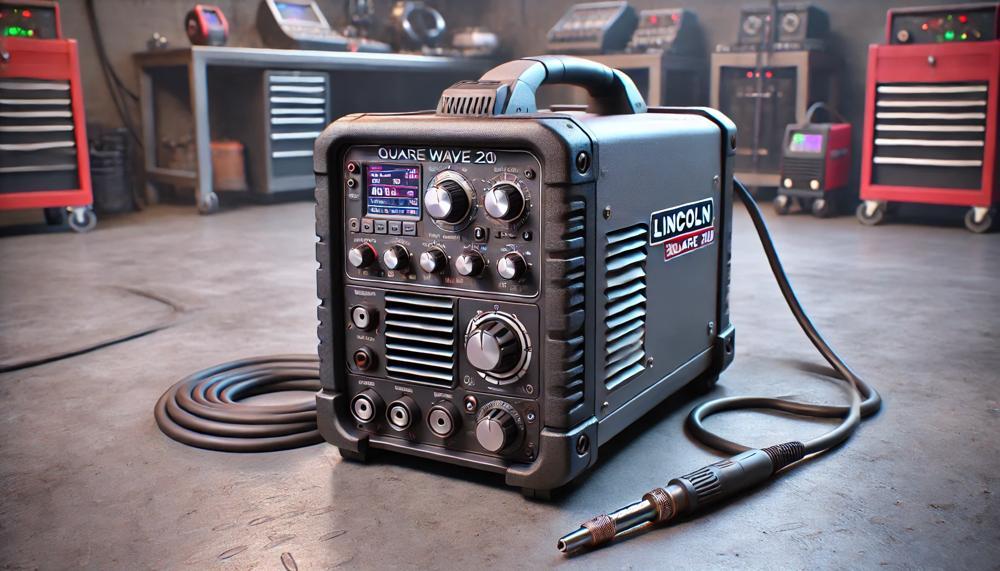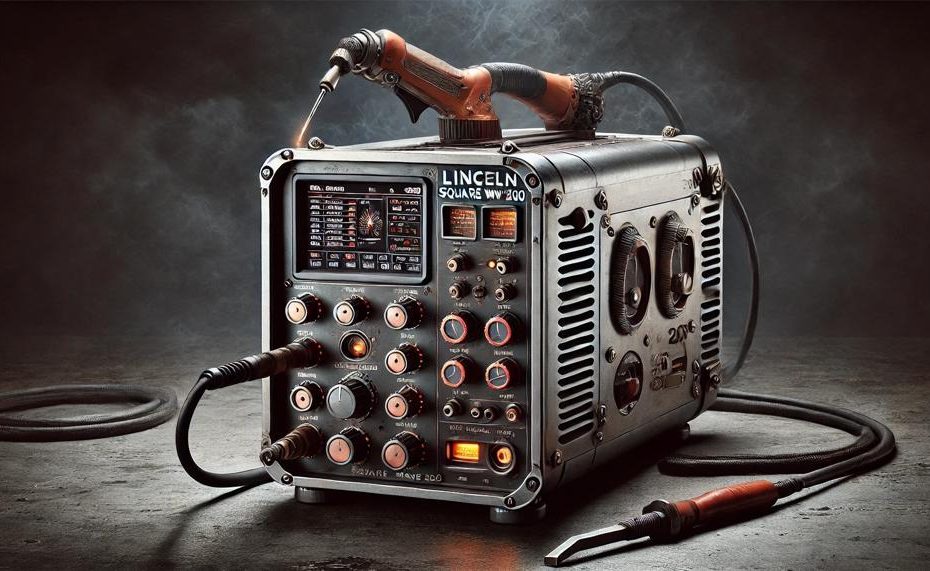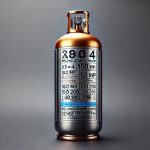When it comes to perfecting the art of TIG welding, the right equipment is as crucial as skill and precision. The Lincoln Square Wave 200 TIG Welder has been a buzzword in the welding community, often celebrated for its versatility and ease of use. But what happens when this celebrated tool becomes a source of frustration? Have you ever found yourself wrestling with unexpected challenges that hinder your welding projects? You’re not alone.
In this article, we’re diving deep into the Lincoln Square Wave 200 TIG Welder’s less-talked-about side: the challenges and issues that users frequently encounter. From erratic arc performance to complex interface navigation, we’re peeling back the layers to reveal what truly goes on beneath its sleek exterior.
Here’s what you can expect as we embark on this enlightening journey:
- In-depth exploration of the welder’s performance issues, such as inconsistent arc stability and heat control difficulties.
- Practical insights into the learning curve associated with mastering its interface and settings.
- Real-world solutions and workaround strategies shared by the welding community.
Our goal is to not only highlight these challenges but also to offer a beacon of hope and guidance for those navigating through them. Whether you’re a seasoned professional or a budding enthusiast, this article promises a blend of empathy, expert advice, and actionable tips to enhance your TIG welding experience with the Lincoln Square Wave 200. Join us as we unravel the mysteries, turning obstacles into opportunities for growth and mastery in the welding world.
Contents
What is the Lincoln Square Wave 200 TIG Welder?
The Lincoln Square Wave 200 TIG Welder is a masterpiece in the welding realm, standing out for its versatile welding capabilities and user-friendly nature. Crafted to cater to both seasoned artisans and enthusiastic hobbyists, its primary purpose is to provide a reliable and high-quality welding experience across a variety of metals including mild steel, stainless steel, and aluminium.
Unlike its contemporaries, the Lincoln Square Wave 200 shines with its ability to effortlessly switch between TIG and stick welding, offering unmatched flexibility for any project at hand.
| Feature | Lincoln Square Wave 200 TIG Welder | Other Welding Machines |
| Welding Processes | TIG and Stick | Usually specialised in one |
| Material Compatibility | Mild steel, Stainless steel, Aluminium | Often limited to one or two types |
| User Interface | User-friendly controls | Can be complex |
| Portability | Lightweight and portable | Varies, often heavier |
| Advanced Features | High-frequency start, Pulse control | Not always available |
| Price | Higher, but offers more value | Less, but may lack features |
| Duty Cycle | Low (25%), but efficient | Often higher |
Distinctly, the Lincoln Square Wave 200’s prowess in aluminium welding sets it apart, courtesy of its high-frequency start and pulse function that ensure pristine, clean welds with better control over the welding process.
This contrasts sharply with many other welding machines that struggle with aluminium or require additional equipment for similar results. Moreover, its dual-voltage capability and advanced starting mechanism without contacting the metal position it as a beacon of innovation in welding technology, embodying both versatility and precision in metal fabrication.
Despite its higher price tag, the Lincoln Square Wave 200 TIG Welder justifies its value through its array of advanced features and unparalleled flexibility, making it a stellar choice for fabricators, DIY enthusiasts, and educators alike.
Common Problems Welders Face with the Lincoln Square Wave 200 TIG Welder
When wielding the Lincoln Square Wave 200 TIG welder, welders might come up against a few niggles that can hamper their work. This machine, though celebrated for its adeptness at switching between TIG and stick welding, is not without its quirks.
Below, you’ll find a rundown of the snags welders often encounter with this particular welder, along with insights into what causes these issues and how they might be nipped in the bud.
| Problem | Cause | Solution |
| Stability Issues with the Arc | Incorrect amperage settings or improper tungsten preparation | Double-check the amperage settings and ensure tungsten is prepared correctly. |
| Difficulty Striking an Arc | Electrode contamination or faulty equipment | Clean or replace the electrode; inspect and fix equipment. |
| Gas Leaks | Loose connections or damaged gas lines | Secure all connections and replace damaged lines. |
| Foot Pedal Malfunctions | Faulty pedal or poor connection | Check the pedal’s wiring and connections; replace if necessary. |
| Overheating | Excessive use without adequate cooling periods | Allow the machine to cool down; avoid continuous long-term use. |
| Poor Weld Quality | Insufficient gas flow rate or coverage, incorrect settings | Adjust gas flow rate and check welding settings are appropriate for the task. |
To dodge these common problems, it’s vital for welders to give their Lincoln Square Wave 200 TIG welder the once-over before and after use. Ensuring everything’s tickety-boo with the setup, such as the gas flow rate and tungsten electrode, alongside keeping the machine clean, can stave off many of the issues listed above.
Regular maintenance isn’t just about avoiding the frustration of downtime; it’s about making sure your welds are up to scratch every time.
Potential Causes of these Issues
Right, let’s get to brass tacks on what’s causing a fuss with your Lincoln Square Wave 200 TIG welder. This stellar machine, known for its finesse and versatility in the world of welding, sometimes throws a spanner in the works. Problems like a wobbly arc, a shy arc that won’t strike, gas doing a Houdini, a foot pedal with a mind of its own, the machine getting hot under the collar, and welds looking a bit rough around the edges can really test your mettle.
| Issue | Potential Cause | Quick Fix |
| Arc Stability Problems | Improper grounding or incorrect amperage settings | Check your ground connection; adjust the amperage according to material thickness |
| Difficulty Striking an Arc | Incorrect torch setup or worn electrodes | Ensure torch is correctly assembled; replace the electrode |
| Gas Leaks | Loose connections or damaged hoses | Tighten all connections and replace damaged hoses |
| Foot Pedal Malfunctions | Faulty wiring or pedal mechanism | Inspect wiring and pedal for damage; may need replacement |
| Overheating | Overuse or blocked airflow | Give it a rest; make sure vents are clear of debris |
| Poor Weld Quality | Contaminated gas lines or incorrect settings | Use high-quality gas filters; double-check settings |

A few tips straight from the workshop floor: Regularly giving your machine a once-over can prevent most of these issues. A clean machine is a happy machine, so don’t skimp on the maintenance.
Before you kick off your project, making sure everything’s set up just right can save you a headache later on. And, treat your welder like it’s part of the crew—protect it from the elements and don’t overwork it.
Remember, a bit of TLC goes a long way with the Lincoln Square Wave 200 TIG Welder.
Solutions for These Issues
For tackling the snags one might hit with the Lincoln Square Wave 200 TIG Welder, here’s a guide that cuts straight to the chase, offering practical solutions. The device, while robust, isn’t immune to troubles. Here’s how you navigate through them, ensuring your welding gear stays in prime nick.
| Issue | Solution | Additional Tips |
| Difficulty Finding Replacement Parts | Seek out authorised dealers and online marketplaces. | Stock up on common consumables and parts prone to wear. |
| Inadequate Power for Heavy-Duty Projects | Ensure you’re working within the machine’s specified capabilities. Consider a higher capacity model for larger projects. | Adjust your welding technique to compensate for power limitations. |
| Lack of Knowledge on Proper Usage and Controls | Devour the instruction manual. Look for tutorials or courses from reputable sources. | Join forums or welding communities for personalised advice and tips. |
| Arc Stability Problems | Check connections and settings, especially the ground clamp and tungsten electrode condition. | Experiment with different tungsten sizes and types based on your welding material. |
| Gas Leaks or Inefficient Gas Flow | Inspect hoses and fittings for leaks. Use soapy water to identify elusive leaks. | Regularly check and replace o-rings and gas valves as needed. |
Dive into the manual before you start, ensuring you’re familiar with the beast you’re handling. If the machine throws a fit, don’t shy from reaching out to Lincoln’s customer service or hunting down wisdom on welding forums. These spaces teem with veterans who’ve weathered all storms.
Switching to a different model might cross your mind if the Square Wave 200 isn’t meeting your needs. The Millermatic 211 Auto-Set or the Hobart Handler 210MVP are worthy contenders, each with their own merits. For TIG specific tasks, the Everlast PowerArc 200ST stands out, especially for those seeking versatility.
Remember, mastering the art of TIG welding with the Lincoln Square Wave 200 involves playing to its strengths. Utilise its high-frequency start for cleaner welds and tailor your frequency settings based on the metal under the torch.
Proper Maintenance and Attention to Detail
Proper Maintenance and Attention to Detail for the Lincoln Square Wave 200 TIG Welder
To keep your Lincoln Square Wave 200 TIG welder in tip-top shape, it’s crucial to pay mind to several maintenance tasks and details. A stitch in time, they say, saves nine, and nowhere is this truer than in the realm of welding, where precision and reliability are paramount. Here’s a rundown of the essentials to keep your welder humming along without a hitch.
| Component | Maintenance Task | Why It Matters |
| Power Supply and Cables | Inspect cords for frays, ensure grounded connection, check welding cables for damage. | Prevents power issues, ensures safety, and avoids welding interruptions. |
| Gas Supply | Verify correct pressure, check for leaks, turn off when not in use. | Ensures consistent gas flow, prevents accidents, and saves resources. |
| Cooling System | Check coolant level, clean/replace filter, inspect lines for blockages. | Avoids overheating, maintains optimal performance, extends welder’s life. |
| Electrodes and Nozzles | Clean and replace as needed, check for wear or damage. | Improves weld quality, prevents defects, and maintains precision. |
| Welding Torch | Inspect for damage, clean regularly to remove spatter buildup. | Ensures smooth operation, prevents faults, and improves weld quality. |
| Ground Clamp | Check for loose or corroded connections, clean regularly. | Ensures a stable electrical circuit, improves safety, and enhances weld quality. |
Remember, a welder well looked after not only stands the test of time but also keeps your work spot on and safe. Regular checks, coupled with prompt action at the first sign of trouble, can save you a bundle and keep your Lincoln Square Wave 200 TIG welder acting its part on the metal stage. It’s not just about keeping it running; it’s about keeping it running right.
Conclusion
In the intricate dance of TIG welding, where precision and reliability take center stage, the Lincoln Square Wave 200 TIG Welder often shines as the lead performer.
This article has traversed the seldom-discussed challenges that accompany this esteemed equipment, shedding light on the technical hurdles and user experience nuances that may deter its performance. From the erratic arc stability to the steep learning curve of its interface, users have encountered obstacles that demand attention and care.
Yet, within these challenges lie opportunities for growth, learning, and community support. Solutions abound, with the welding community rallying to share knowledge, tips, and workarounds, proving that the journey with the Lincoln Square Wave 200, while occasionally bumpy, is never taken alone.
Maintenance, understanding, and patience emerge as the key ingredients to mastering this tool, transforming potential frustrations into victories in metal artistry.





